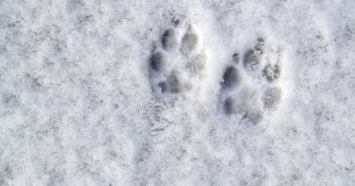
Winter weather is hard on your pooch's paws. The freezing temperatures, drying salt, toxic deicing chemicals, and damp snow can all lead to painful and cracking paws. You can help your dog stay happier and healthier this season by following these tips to protect dogs paws in snow.
1. Limit the time your dog spends outside when it’s cold.
Despite the fact that many dogs enjoy frolicking in the snow and playing in the cold weather, there is a limit of how cold is too cold that can be dangerous, or even deadly. Many people assume a dog's fur will naturally keep them warm during the winter, but dogs’ paws can get frostbite and they’re also susceptible to hyperthermia because of exposed skin. A good rule of thumb is that as long as your dog is running and playing in the snow, it is fine to remain outdoors, but as soon as they stop, you should think about heading inside. If your dog must be outside for longer than what is usual, consider a coat or jacket and boots.
2. Maintain a dog-friendly winter yard.
There are a lot of things you can do to help your dog have a better winter. Pet owners who allow their dogs to go outside to do their business should make the area as safe as possible. Keep the fenced-in areas free from snow and ice. Avoid using toxic deicers on your property, or a large amount of rock salt in places where your dog may go. If you must use deicers, look for the type that is safe to use around animals. If you notice your car leaking antifreeze, clean it up immediately. Although antifreeze is a deadly poison, it has a sweet taste that can attract dogs, other animals, and even young children.
3. Prepare your dog's paws before heading outside.
While it is a good idea to maintain your dog's paws throughout the year, it is essential throughout the winter months. Before going for an extended outdoor walk, use an electric clipper to trim excess hair between pads on your dog's paw. Too much extra hair can retain moisture and lead to freezing which increases the chance of frostbite. Also try to keep your dog's nails trimmed since unkempt nails make it more difficult for your pet to walk and increases their chance of getting hurt by slipping on ice. You may also want to use a specially formulated paw wax to add another layer of protection from the weather.
4. Consider using dog paw covers.
Doggy snow boots can protect your dog's paws against getting frostbite, drying out, and coming in contact with chemicals. Dog boots also provide your pet with better traction in slippery conditions. When choosing your dog's snow boots, make sure that they are secure enough to stay on, but are loose enough not to constrict blood flow to extremities. If it is possible, before purchasing anything, have your dog try on several different brands of dog boots to see which ones are the best fit and make sure to take the time to train your dog to wear boots properly.
5. Give your pooch a little post-walk pampering.
After returning from a winter walk, spend a few minutes caring for your dog's paws. Inspect each paw and look for and remove debris embedded in the pads or between them. Use a clean towel with warm water to wipe down each of your pet's feet; this helps melt ice and washes off as much salt and deicer as possible. Finally, apply a pet-friendly moisturizer to your dog's paws to prevent cracking. Make sure to wipe off excess to keep your dog from tracking it around your home.
While winter can be more dangerous for your dog than other times of the year, there is no reason why you can’t let your dog enjoy a winter wonderland when taking the proper precautions.